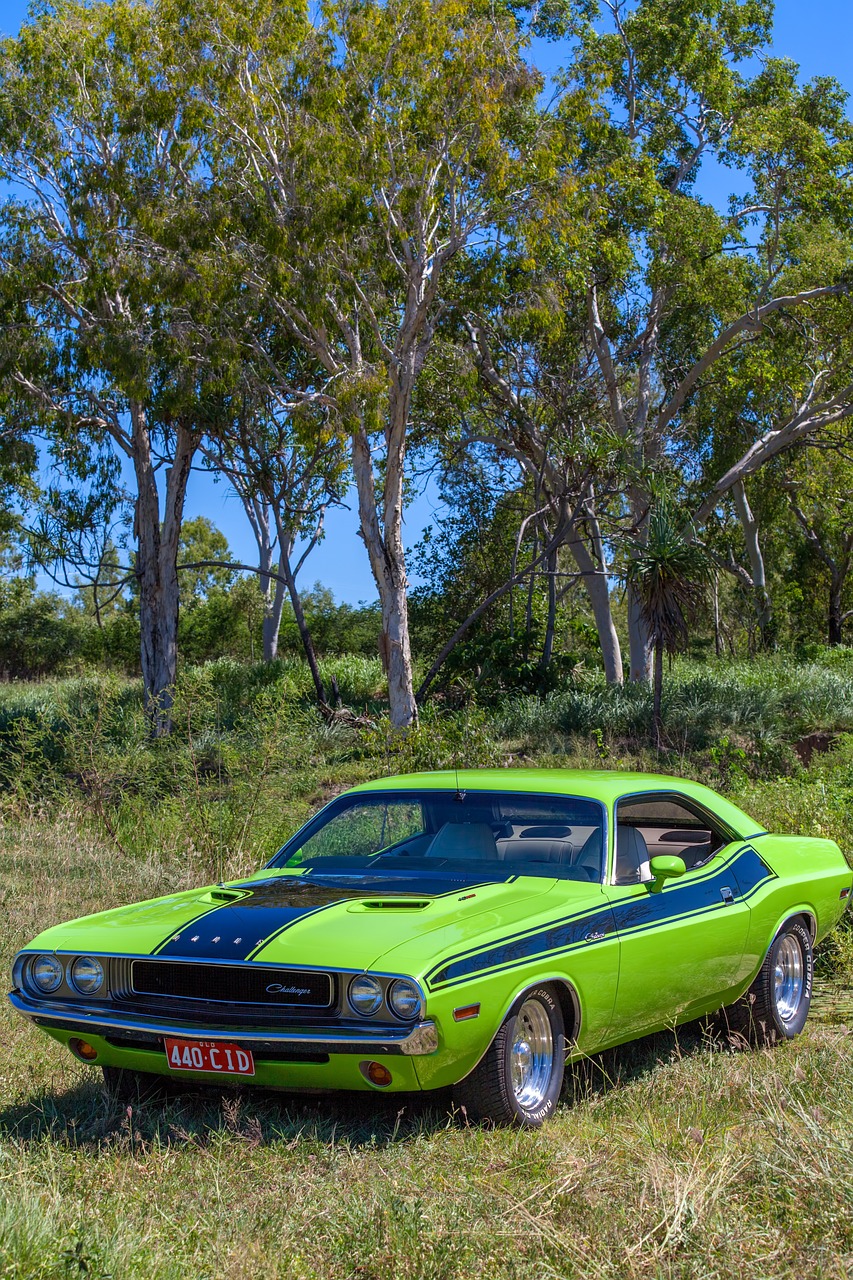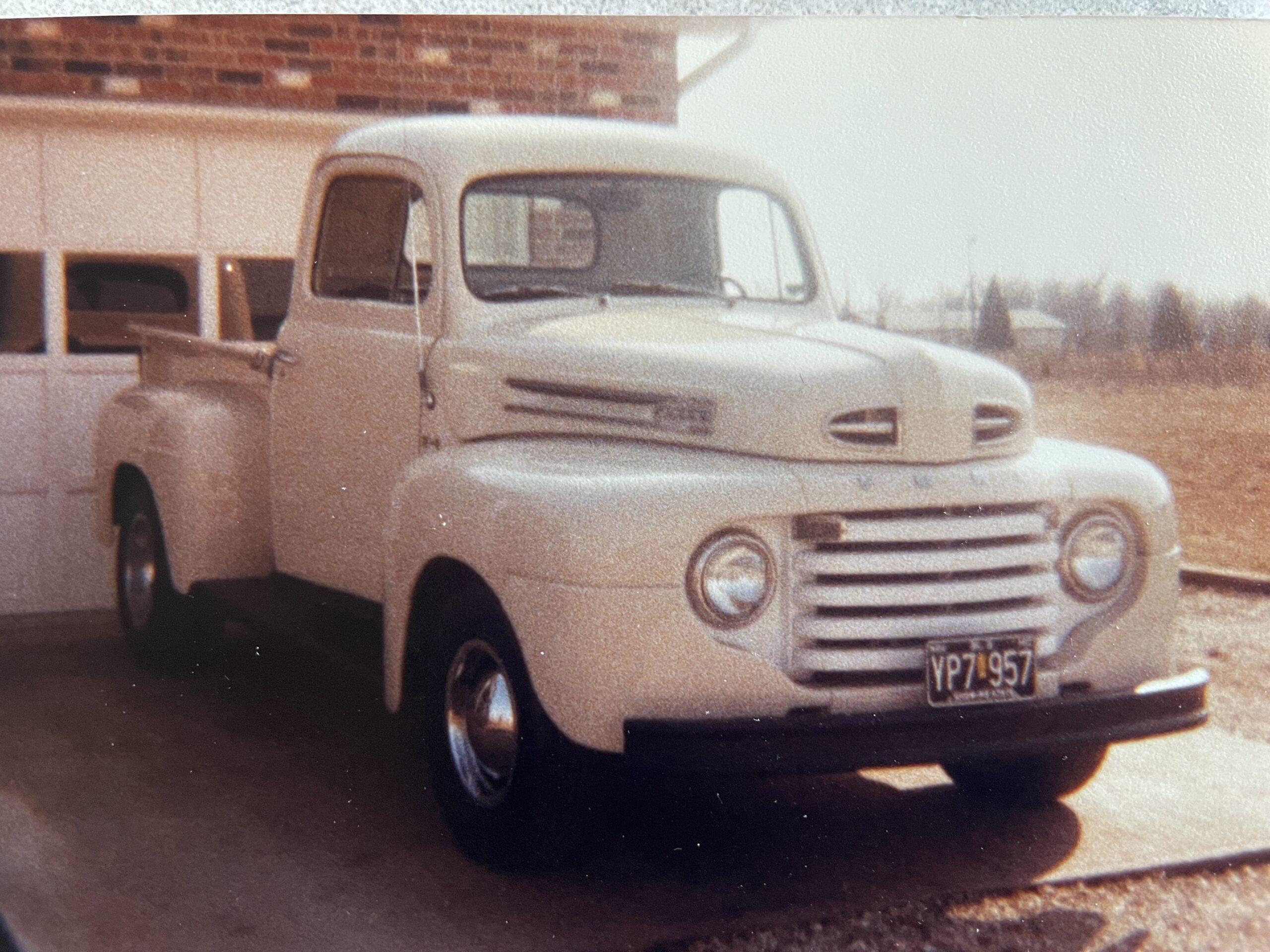For many enthusiasts, owning a classic car is the fulfillment of a long-held dream, bringing a piece of automotive history into their lives. But as exciting as it is, buying a classic car requires thoughtful consideration. Rushing the process can lead to unexpected costs and challenges. This guide offers essential tips to help you make a smart, budget-friendly decision and enjoy the journey as a first-time classic car owner.
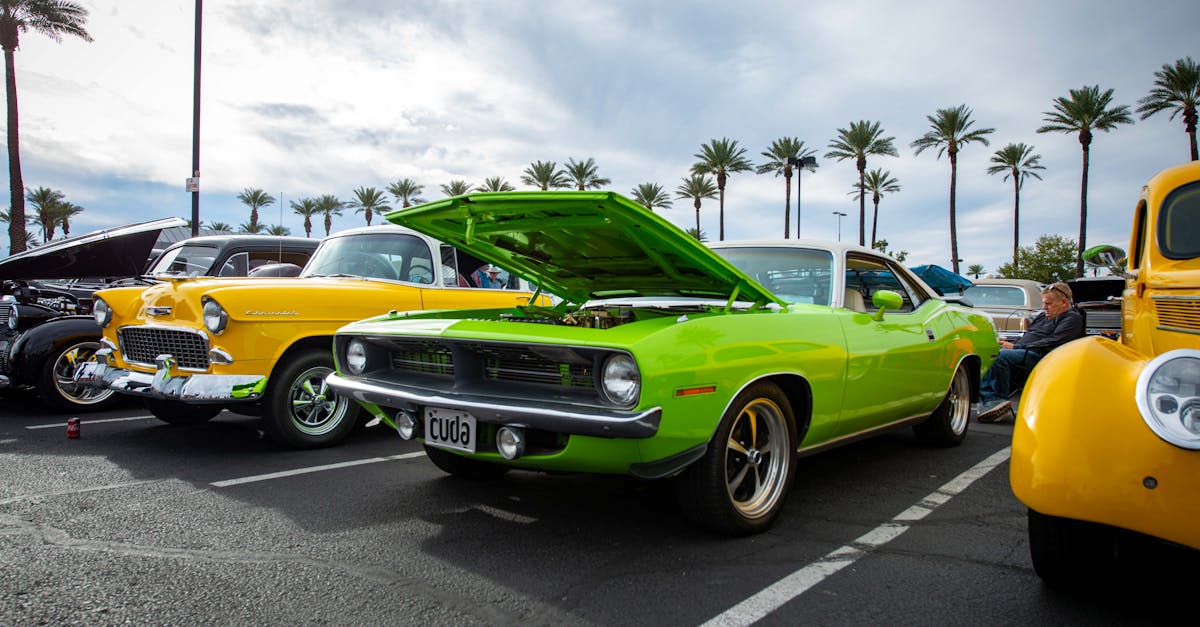
1. Research and Set a Budget
Owning a classic car often requires a larger financial commitment than modern cars, and understanding these costs upfront can save you from unexpected expenses down the road. Begin by establishing a budget that accounts for the purchase price, initial repairs, routine maintenance, and potential restoration costs.
Certain models are more beginner-friendly, both in price and maintenance. Classic Mustangs and Camaros, for instance, offer a vast range of affordable parts and are easier to maintain due to their popularity and the availability of resources and parts suppliers like Hagerty andRusty Autos. It’s often advised to double your initial budget estimation, as classic cars frequently require more attention than initially expected.
Purchasing insurance for your classic car will be another important investment that is sometimes overlooked at first. It’s important to have adequate coverage at the beginning as well as increasing coverage along the way especially if you’re doing your own restoration. For more on insurance for classic cars, seeAmerican Collectors Insurance.
Classic Car Ownership Costs Breakdown: This bar chart shows the relative costs associated with purchasing, insuring, repairing, and restoring a classic car. These categories can help first-time buyers understand the initial and ongoing financial commitment.
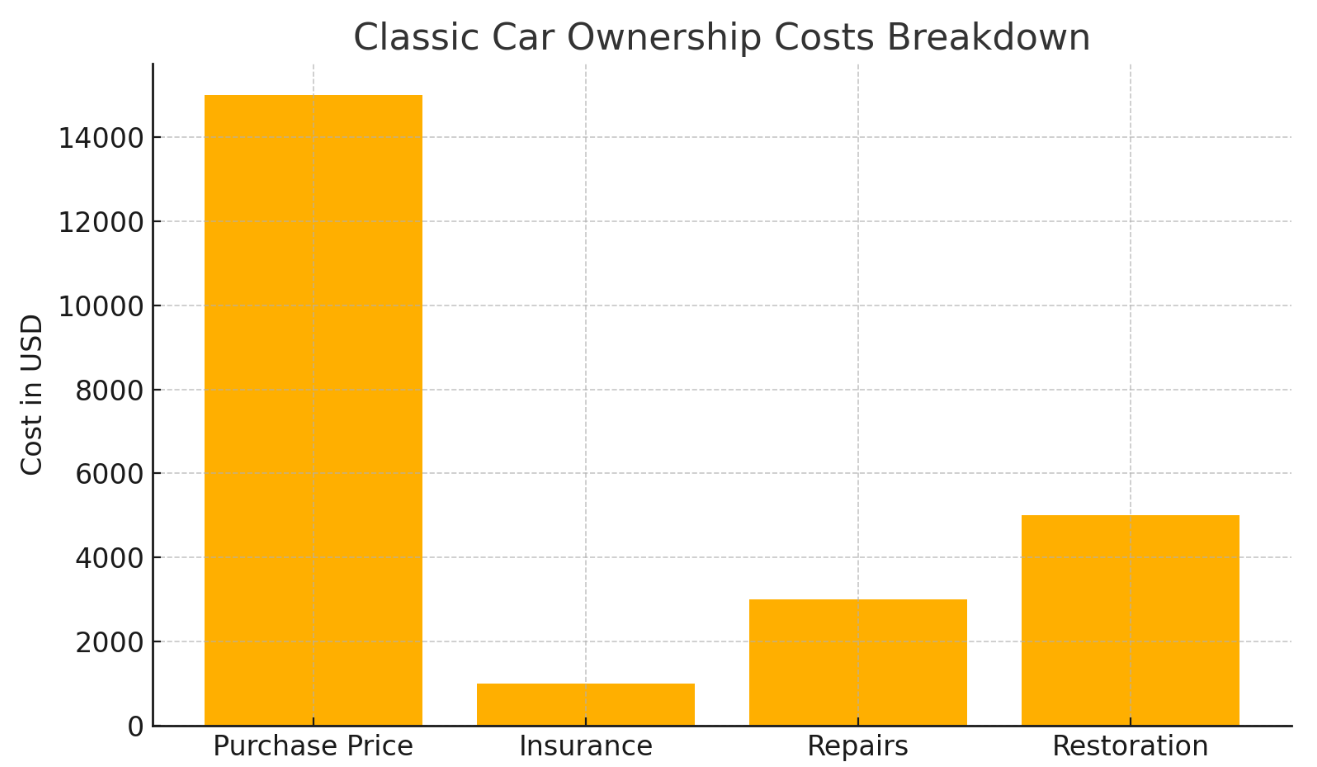
2. Inspection Tips
An inspection is crucial when buying a classic car. While it may be tempting to go with your gut, a thorough examination by a vintage car specialist is vital. This professional can assess the car for rust (a common issue with older vehicles), engine health, transmission, brakes, and more. If the vehicle hasn’t been regularly maintained, its condition may have worsened even if it looks fine on the surface Hagerty, The Art of Manliness.
Some classic car dealerships, like those referenced byArt of Manliness, encourage buyers to bring in inspectors, adding credibility and transparency. Look for trusted inspectors recommended by local classic car clubs, which often have deep knowledge of particular makes and models.
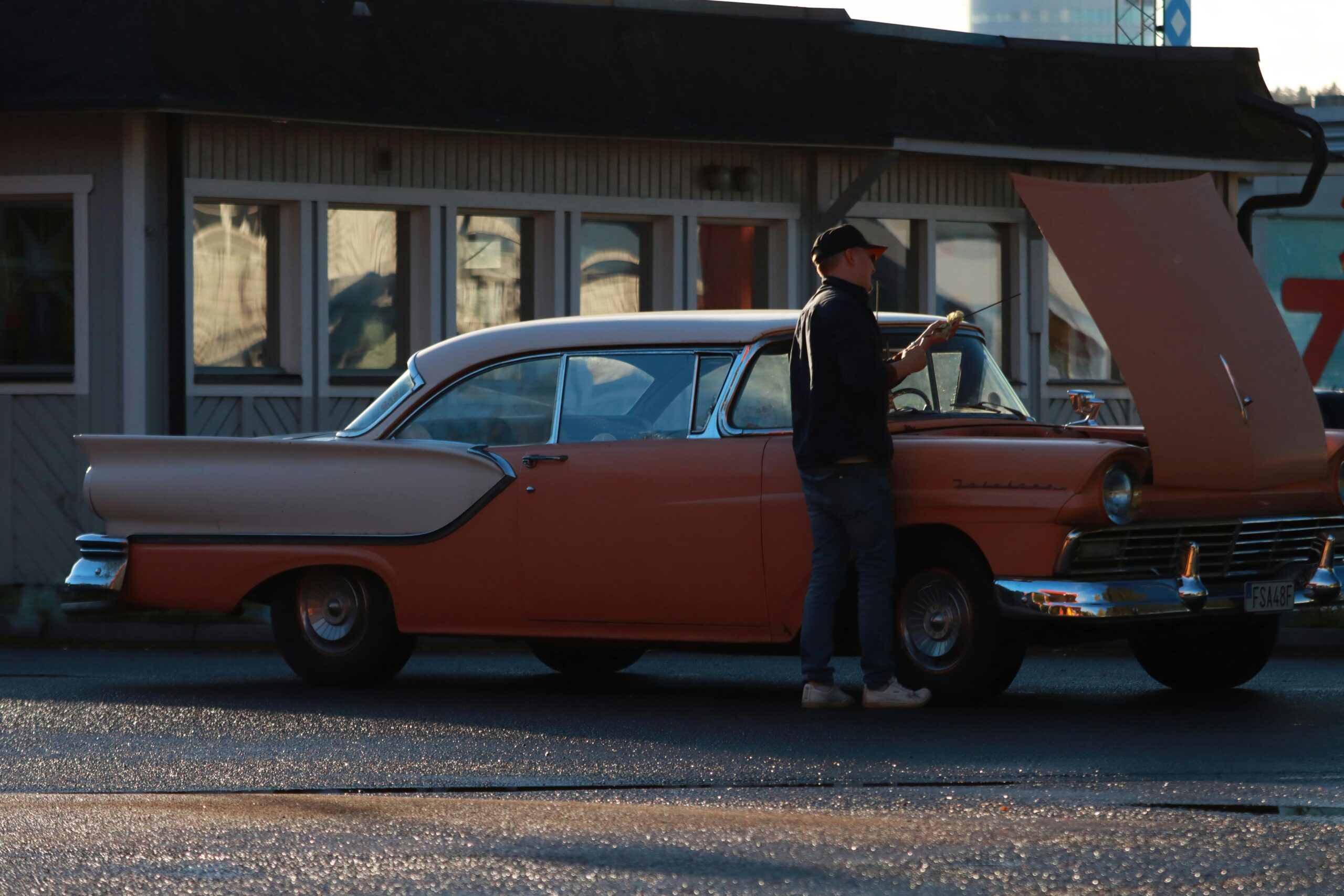
3. Availability of Parts
One of the biggest challenges of classic car ownership is sourcing parts. Vintage vehicles can vary significantly in the availability of parts, which influences the overall maintenance cost and downtime. Models like the Ford Mustang, Chevrolet Camaro, and VW Beetle are great for beginners due to their ample parts supply available through reputable sources likeRockAuto andClassic Industries.
For rarer models, you may need to rely on niche suppliers or even international sources, which can increase wait times and costs. Consider joining a classic car club, as members often have insights into parts suppliers and may even offer spares. Hagerty.
- For more insights into parts sourcing, checkM&T Manufacturing.
Part Availability Comparison: This horizontal bar chart compares the availability of parts for various classic car models, illustrating that popular models like the Mustang and Camaro have higher part availability, while less common models like the Porsche 356 and Jaguar E-Type may present challenges in sourcing parts.
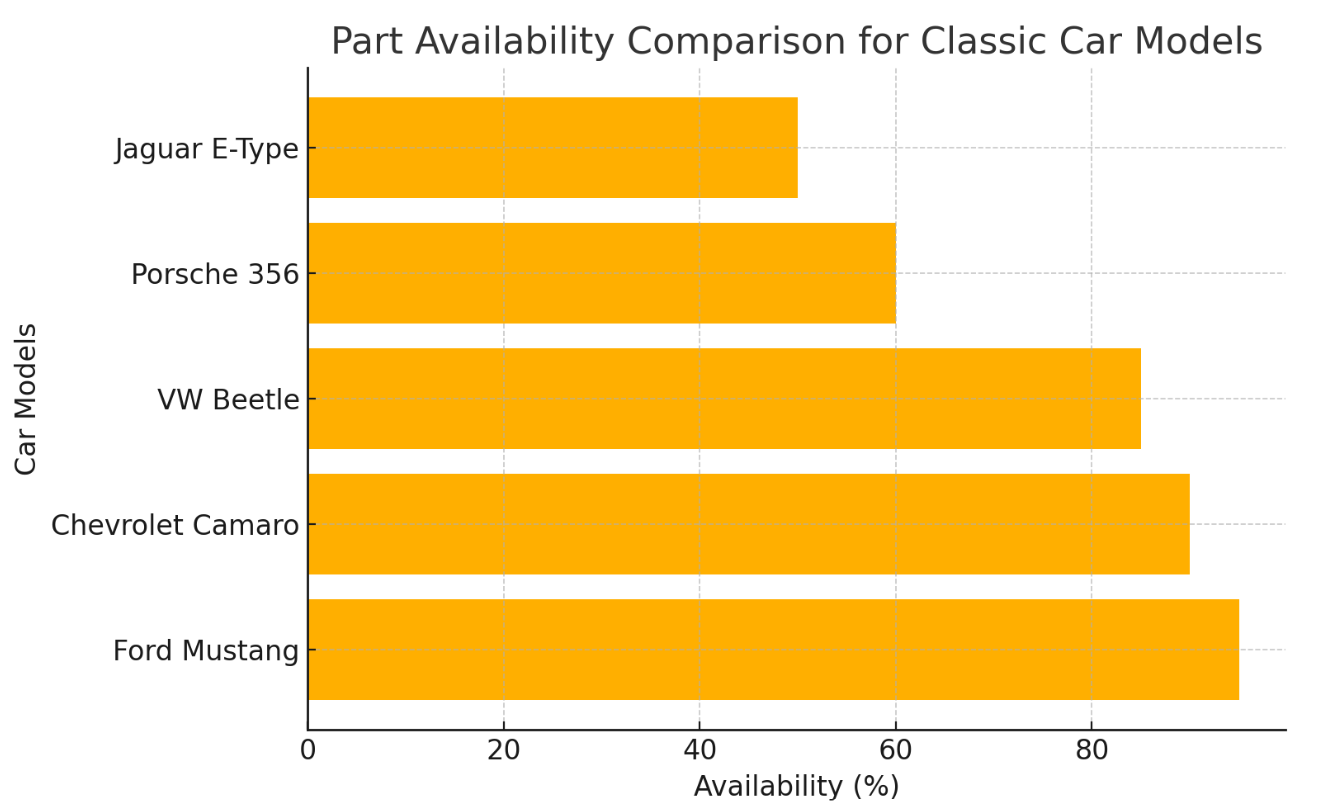
4. Consider Insurance Needs
Unlike modern vehicles, classic cars need specialized insurance to cover their unique value and usage. Standard policies often don’t account for the “agreed value” of a classic car, which considers its worth as a collector’s item rather than its depreciated value. Specialty insurers likeHagerty andAmerican Collectors Insurance offer policies tailored to classic cars, including options for spare parts and limited-use discounts.
Before selecting insurance, compare policies to understand what’s included. Most classic car insurance policies limit the annual mileage but offer coverage for restoration work and spare parts.
This table for Standard vs. Classic Car Insurance Policies compares key features like mileage limits, vehicle usage, and more.
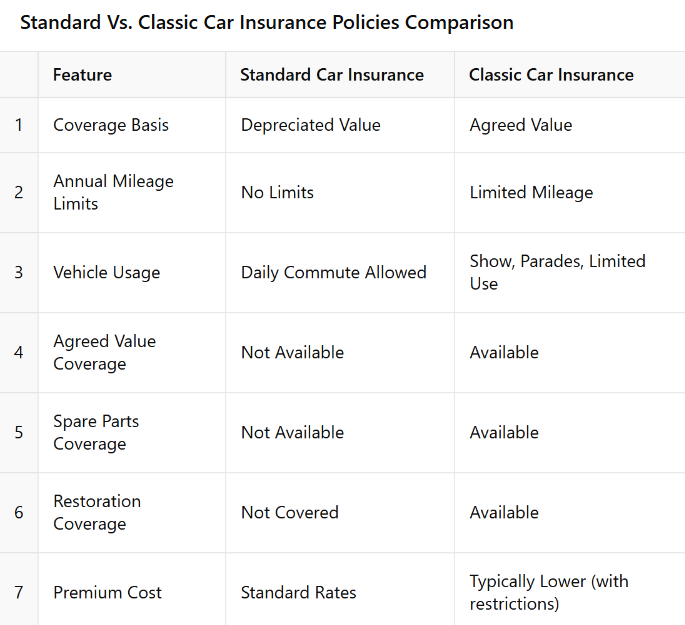
5. Join a Classic Car Community
Being part of a classic car community brings significant benefits beyond companionship. Clubs and online forums provide access to exclusive resources, swap meets, and car shows. You’ll also meet knowledgeable members who are often willing to share parts, tools, and advice. These communities often hold events, where you can gather insights from seasoned owners and enthusiasts. Watch for our community forum coming soon! Sign up so you’ll to get exclusive updates and be among the first to access our forums where members share valuable information on restoration, storage, and maintenance.
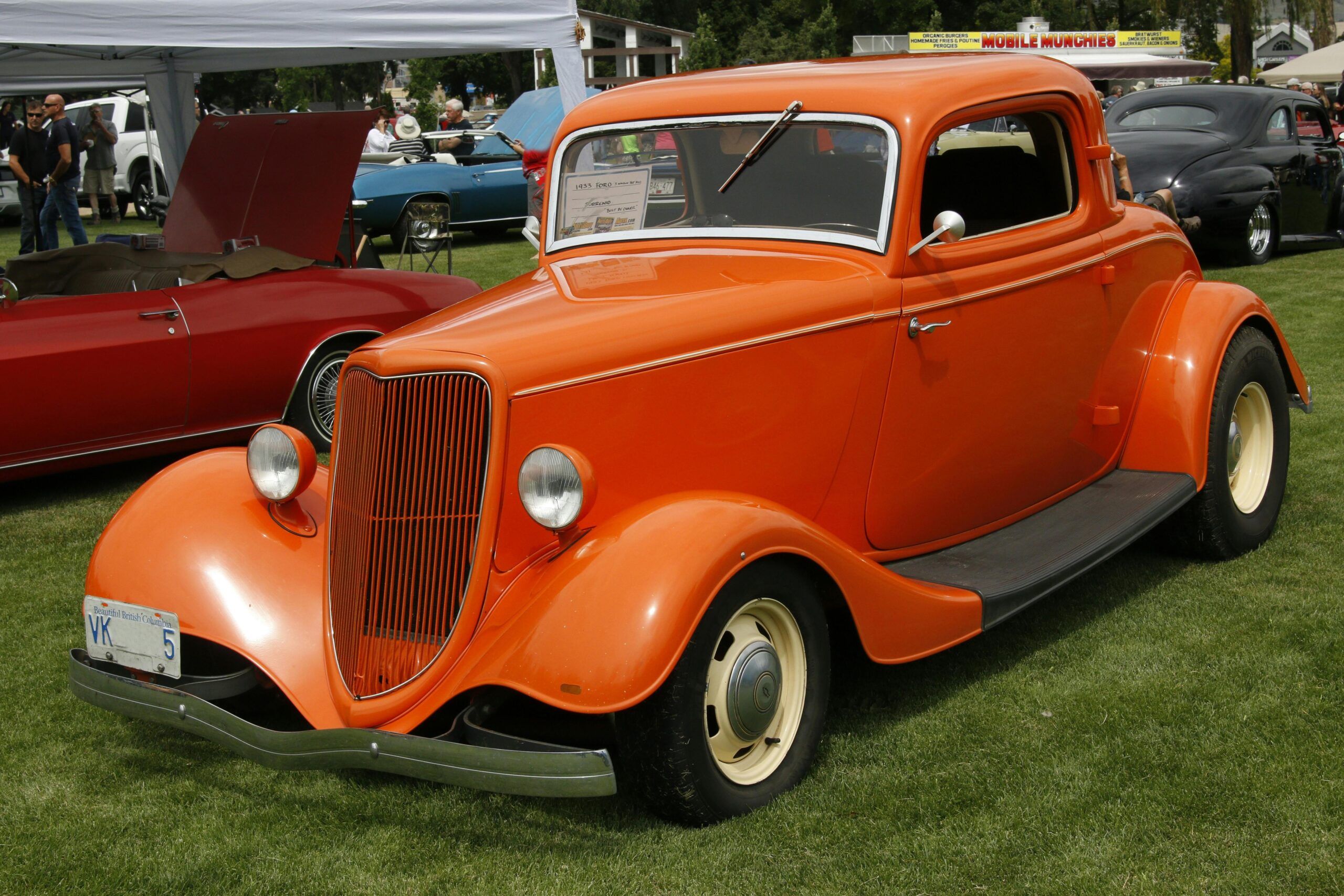
Final Tips: Enjoy the Ride, but Stay Grounded
Embarking on the journey of classic car ownership is both exciting and rewarding, but it’s essential to keep realistic expectations. Here are some final thoughts to guide you along the way:
-
Be Prepared for Surprises: Classic cars are often full of quirks and unexpected needs. While this is part of their charm, it’s also a reminder to keep a buffer in your budget and be flexible with timelines for repairs and restorations.
-
Start Simple: If you’re new to classic cars, consider choosing a model with ample parts availability and support networks. This approach can save you time and money, especially as you get familiar with the nuances of owning a vintage vehicle.
-
Enjoy the Process: Owning a classic car isn’t just about having a beautiful vehicle; it’s about the journey of learning, restoring, and connecting with other enthusiasts. Join a community, attend shows, and don’t hesitate to ask for advice. You’ll find that classic car ownership is as much about camaraderie as it is about cars.
-
Take Your Time: Restoration and repairs are part of the classic car experience, so don’t feel rushed. Enjoy each step, knowing that even the process of troubleshooting and fixing adds to the story of your car.
-
Drive with Care: Classic cars are pieces of history, and driving them is a privilege. While they’re meant to be enjoyed, taking care of them ensures they stay on the road for years to come.
By balancing excitement with realistic expectations, you’ll find that classic car ownership is a truly fulfilling adventure. Embrace the ups and downs, learn as you go, and savor every mile of the journey.

